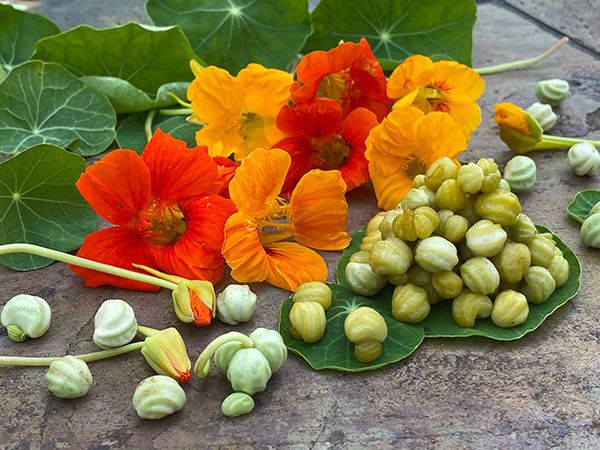Nasturtiums are one of the quickest and easiest hardy annual flowers to grow producing masses of vividly coloured blooms throughout summer and into autumn.
Nasturtiums come in both bushy and climbing varieties, which makes them versatile, with some varieties having attractive marbled or mottled leaves.
Along with being a beautiful, the flower, flowers, leaves and seeds are all edible, making a bright coloured garnish to salads and other uncooked dishes with leaves having a peppery taste, picked when young.
Seeds can be used as a substitute for capers, that you pick, when mature but still green, then pickle in vinegar.
Bees also love the colourful blooms, and caterpillars of the large and small white butterflies will feed on the leaves.
Nasturtiums are ideal for different areas around the garden, including pots and containers, but must have sun at least half of the day in order to grow well, doing best in sites sheltered from winds in gravelly, stony ground or grown on banks.
Climbing varieties can be trained up vertical supports and are great to twine through other plants. Climbers can also be used as trailers, to spread across gravel or cascade down a slope or bank.
Free-draining soil is essential and, unlike many other flowers, they thrive on poor soils, that are low in fertility. A fertile soil will result in lots of leafy growth, at the expense of flowers.
For best results, sow nasturtium directly where they are to flower, as they’re fast-growing and no need to transplant.
The first seeds can be sown in mid-spring and you can carry on sowing until mid-summer to ensure flowers right up to the first frosts.
Removing dead flower heads will encourage more blooms. Seeds can be collected when ripe, saved to sow next year, and are most likely to self-sow.






